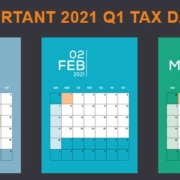Small Businesses Can Benefit from the Work Opportunity Tax Credit
- What is the Work Opportunity Tax Credit?
- Discover the maximum credit.
- Find out who can claim the credit.
- Discover a list of qualified employees.
- Learn about the pre-screening and certification processes.
- Discover the rules for tax-exempt employers claiming the WOTC.
The Work Opportunity Tax Credit (WOTC) is a general business credit jointly administered by the IRS and the DOL. The WOTC is available for wages paid to certain individuals who begin work on or before December 31, 2025.
Any employer that hires and pays or incurs wages to certain individuals certified by a designated local agency (sometimes referred to as a state workforce agency) as belonging to one of 10 targeted groups can claim the Work Opportunity Tax Credit.
In general, the Work Opportunity Tax Credit equals 40% of up to $6,000 of wages paid to or incurred on behalf of, an individual who:
- Is within their first year of employment with the business;
- Is certified as being a member of a targeted group; and
- Performs at least 400 hours of services for that employer.
However, an employer cannot claim the WOTC for employees who are rehired.
Maximum Work Opportunity Tax Credit
The maximum tax credit is generally $2,400. A 25% rate applies to wages for individuals who perform fewer than 400 but at least 120 hours of service for the employer. The IRS may consider up to $24,000 in wages in determining the WOTC for certain qualified veterans.
Who Can Claim the Work Opportunity Tax Credit
Employers of all sizes are eligible to claim the Work Opportunity Tax Credit. This includes both taxable and certain tax-exempt employers located in the United States and certain U.S. territories. Taxable employers claim the WOTC against income taxes. In general, they may carry the current year’s unused WOTC back one year and then forward 20 years.
The procedure is different for eligible tax-exempt employers. They can claim the Work Opportunity Tax Credit only against payroll taxes and only for wages paid to members of the Qualified Veteran targeted group.
Qualified Employees
An employer may claim the Work Opportunity Tax Credit for an individual who is certified as a member of any of the following targeted groups:
Qualified IV-A Recipient
An individual who is a member of a family receiving assistance under a state plan approved under part A of title IV of the Social Security Act relating to Temporary Assistance for Needy Families (TANF). Individuals must receive the assistance for any 9-month period during the 18-month period ending on the hiring date.
Qualified Veteran
A “qualified veteran” is a veteran who is any of the following:
- A member of a family receiving assistance under the Supplemental Nutrition Assistance Program (SNAP) (food stamps) for at least 3 months during the first 15 months of employment.
- Unemployed for a period totaling at least 4 weeks (whether or not consecutive) but less than 6 months in the 1-year period ending on the hiring date.
- A disabled veteran is entitled to compensation for a service-connected disability hired not more than one year after discharge or release from active duty in the U.S. Armed Forces.
- Unemployed for a period totaling at least 6 months (whether or not consecutive) in the 1-year period ending on the hiring date.
- Disabled and entitled to compensation for a service-connected disability who remains unemployed for a period totaling at least six months (whether or not consecutive) in the one-year period ending on the hiring date.
- See IRS Notice 2012-13 for additional details.

Ex-Felon
A “qualified ex-felon” is a person hired within a year of:
- A felony conviction or
- Release from prison for a felony
Designated Community Resident (DCR)
Who is at least 18 years old and under 40, who resides within one of the following:
- An Empowerment Zone
- An Enterprise community
- A Renewal community
and continues to reside at the locations after employment.
Vocational Rehabilitation Referral
A “vocational rehabilitation referral” is a person who has a physical or mental disability. They must have been referred to the employer while receiving or upon completion of rehabilitative services under:
- A state plan approved under the Rehabilitation Act of 1973 OR
- An Employment Network Plan under the Ticket to Work program, OR
- A program carried out under the Department of Veteran Affairs.
Summer Youth Employee
A “qualified summer youth employee” is one who:
- Is at least 16 years old, but under 18 on the date of hire or on May 1, whichever is later, and
- Is only employed between May 1 and September 15 (and not employed prior to May 1) and
- Resides in an Empowerment Zone (EZ), enterprise community, or renewal community.
Supplemental Nutrition Assistance Program (SNAP) Recipient
A “qualified SNAP benefits recipient” is an individual who on the date of hire is:
- At least 18 years old and under 40, AND
- A member of a family that received SNAP benefits for:
> the previous 6 months OR
> at least 3 of the previous 5 months
Supplemental Security Income (SSI) Recipient
An individual is a “qualified SSI recipient” if a month for which this person received SSI benefits is within 60 days of the date this person is hired.
Long-Term Family Assistance Recipient
A “long-term family recipient” is an individual who at the time of hiring is a member of a family that meets one of the following conditions:
- Received assistance under an IV-A program for a minimum of the prior 18 consecutive months; OR
- Received assistance for 18 months beginning after 8/5/1997 and it has not been more than 2 years since the end of the earliest of such 18-month period; OR
- Ceased to be eligible for such assistance because a Federal or State law limited the maximum time those payments could be made, and it has been not more than 2 years since the cessation.
Qualified Long-Term Unemployment Recipient
A qualified long-term unemployment recipient has been unemployed for not less than 27 consecutive weeks at the time of hiring. They must also have received unemployment compensation during some or all of the unemployment period.
Pre-screening and Certification
An employer must obtain certification that an individual is a member of the targeted group before they may claim the credit. An eligible employer must file Form 8850, Pre-Screening Notice and Certification Request for the Work Opportunity Credit, with their respective state workforce agency within 28 days after the eligible worker begins work.
Employers should contact their state workforce agency with any specific processing questions for Forms 8850.
Tax-exempt Employers
Qualified tax-exempt organizations described in IRC Section 501(c) and exempt from taxation under IRC Section 501(a), may claim the credit for qualified veterans who began work for the organization after 2020 and before 2026. Tax-exempt employers claim the credit against the employer's Social Security tax by separately filing Form 5884-C, Work Opportunity Credit for Qualified Tax-Exempt Organizations Hiring Qualified Veterans.
Organizations may file Form 5884-C after the organization files the related employment tax return for the period for which it is claiming the credit. The IRS recommends that qualified tax-exempt employers do not reduce their required deposits in anticipation of any credit. The credit will not affect the employer’s Social Security tax liability reported on the organization’s employment tax return.
Need additional information and/or assistance to determine if the Work Opportunity Tax Credit is appropriate for your business? Call Fiducial at 1-866-FIDUCIAL or make an appointment at one of our office locations to discuss your situation.
Ready to book an appointment now? Click here. Know someone who might need our services? We love referrals!
For more small business COVID-19 resources, visit Fiducial’s Coronavirus Update Center to find information on SBA loans, tax updates, the Paycheck Protection Program, and paid sick and family leave.









